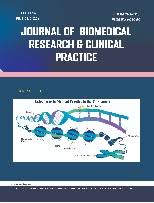Clinical and Mammographic Findings of Patients Referred for Mammography in Babcock University Teaching Hospital: A Retrospective Study of the First Year Post-installation Patients.
Abstract
Background: Breast diseases are world-wide and include a spectrum of conditions ranging from inflammatory
lesions to benign and malignant neoplasms. Mammography is one of the imaging modalities of choice in the
modern management of these patients. However, this investigation is expensive but has a good diagnostic yield in
patients referred for breast imaging services. This study was conducted at Babcock University Teaching Hospital
(BUTH), Ilisan Remo, which serves the people of Ogun state and the neighbouring states. As at the time of this
study, it was the only public hospital with a mammography machine in South West (SW) Nigeria. Objectives: The
objective of the study was to describe the demographic characteristics, clinical presentation, mammographic
findings and pattern of breast diseases in the first year after installation, and to compare the results with previous
studies, with a view to improving its application in our setting. Methodology: This one year retrospective study was
carried out on 132 patients seen at the Radiology department of BUTH, which, was then the only referral centre for
patients within SW Nigeria. Radiology request cards, documented radiology reports, and soft copies of
mammographic images were collected by our residents who served as research assistants. The radiologists
reviewed the mammograms and reports. Patients with incomplete medical information were excluded from the
study. Statistical Package for Social Sciences (version 26 software) was used for data analysis. Results: The age
range was between 36 and 90 years, with the highest frequency between 46-50 years age group (19.7%), while the
lowest frequency was found among women that were 70 years and above. Twenty seven point nine percent (27.9%)
of the women came for routine mammographic screening, followed by those with breast pain and masses. Only
18.2% had normal mammograms, while BIRADS 2 lesions had the highest occurrence with a total of 38.10%. No
male patient presented during the review period. Conclusion: Mammography requests in the study environment are
mainly for diagnostic purposes, but screening mammography is gradually becoming significant. Public awareness,
poverty reduction and ready availability of mammography facilities are required to improve mammography
screening. Also, breast masses and micro-calcifications are the commonest types of pathology found in
mammography





